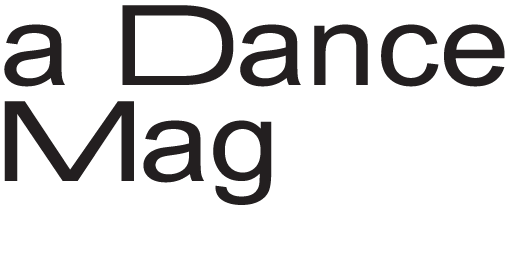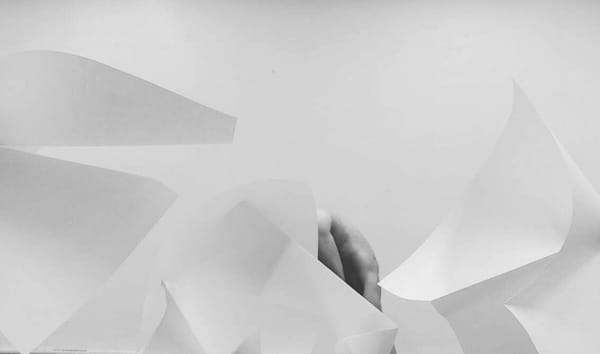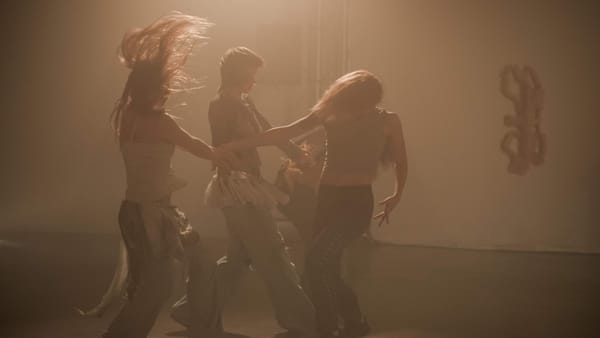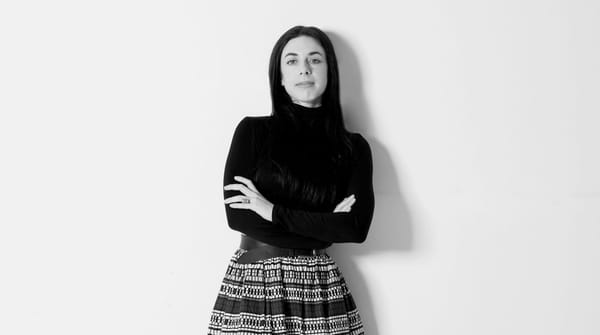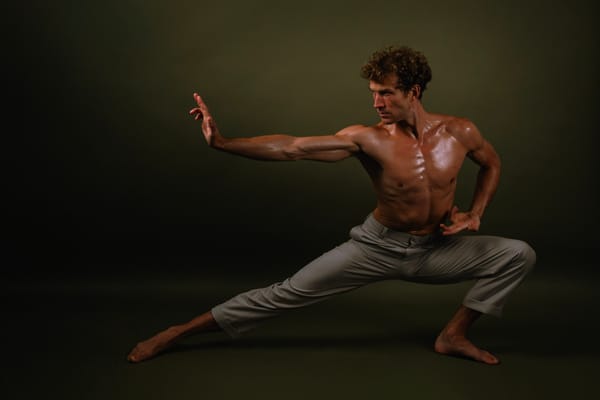Pierre Geagea: Dancing in a Soundless World
Pierre Geagea, a deaf Lebanese dancer, moves through a world that often forgets to listen. In a country where silence is mistaken for absence, he speaks through motion—teaching, protesting, insisting: I am here. His art is not just performance; it’s a manifesto written in breath and rhythm.
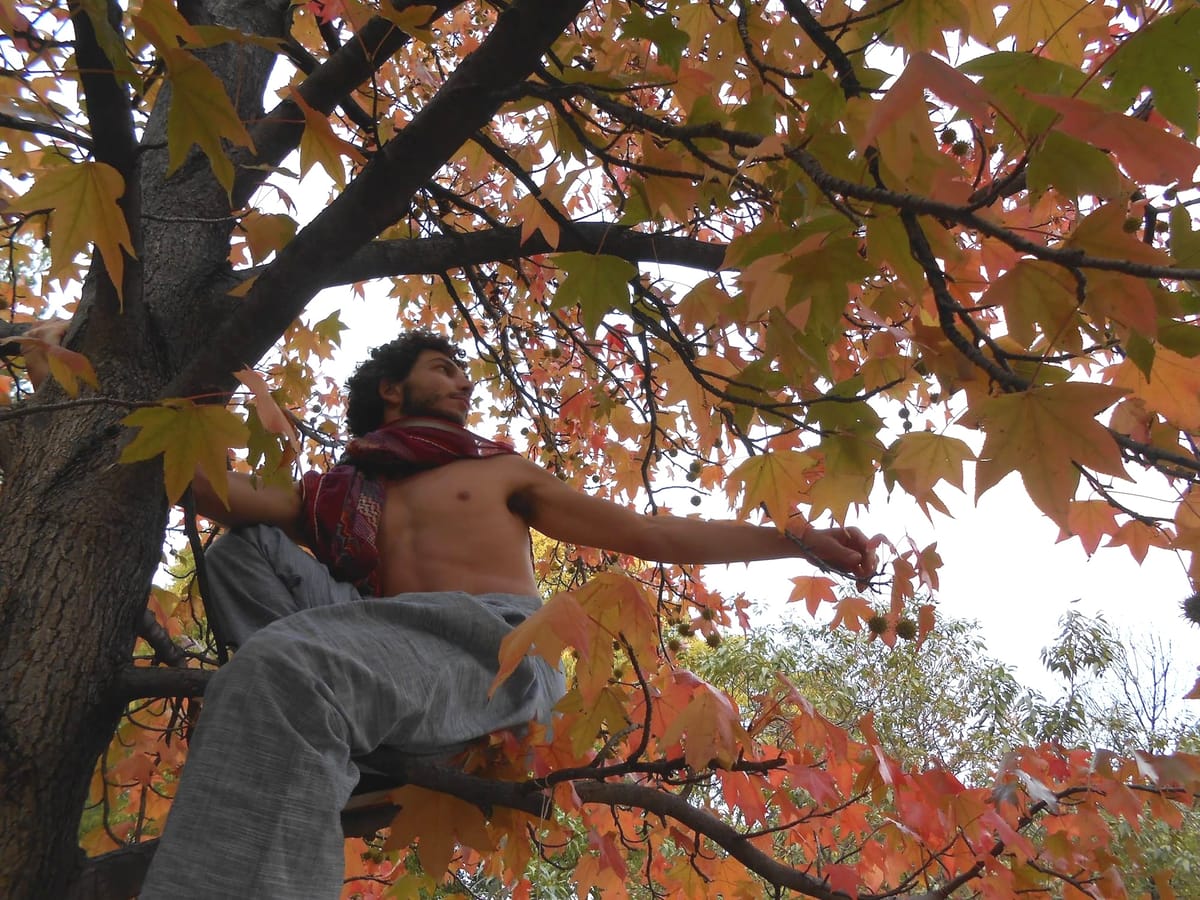
Original text by: Zena Takieddine
Pierre Geagea stands tall, his tumbling brown curls framing a face that wouldn’t look out of place on a Roman statue. His eyes—wide-set, expressive—take in the room with quiet ease. When I meet him, I’m the one fumbling, overthinking every gesture, every word. Should I speak in English? Arabic? French? Should I hug him? Sign? The uncertainty makes me painfully aware of my own assumptions. Pierre, a deaf contemporary dancer from Lebanon, seems unbothered. He waits, patient, while I scramble to meet him on his terms.
We settle into armchairs in my friend Syndi’s living room, a space chosen for its warmth and because Syndi knows some sign language—my safety net. As tea steeps, I ask Pierre about touch, about connection. He repeats the word, reshaping it: Contact. Tawasul. Then, with a gentle firmness, he dismantles it entirely.
“There is no such thing as contact.”
The statement lands like a stone. Not defeatist, just matter-of-fact. Pierre has spent his life reaching across the divide of silence, only to find that true connection is rare. “I’ve tried. One person at a time. It takes patience.”
Movement as Language
Pierre’s introduction to dance wasn’t through vibrations in the floor, as I’d assumed, but through the flickering images of Michael Jackson and Elvis Presley on TV. He mimicked their movements, teaching himself the language of the body before he ever stepped into a studio. By the time he performed Mother Tongue, his solo piece, he had honed an artistry that was both expansive and intimate—his body speaking in sweeping gestures, his eyes locking onto the audience as if to say, See me. Feel this.
Onstage, he is a conduit. Offstage, connection is harder. “Lebanon is hard,” he says. “For people like me, there is no contact.” The country’s lack of infrastructure for the deaf means isolation is the default. Yet Pierre refuses pity. “Being deaf doesn’t mean we are not fully capable.” In Europe, he doesn’t have to explain this. In Lebanon, he fights for it daily.
Breath, Body, Being
When I ask what moves him, Pierre closes his eyes, inhales. “Breathing makes me move.” His nose flares, his chest rises. “If I catch a scent of something appealing, I turn toward it. If it’s ugly, I turn away. Movement starts from my nose.” His whole body is an antenna, attuned to the world in ways hearing people might overlook. He traces patterns in the carpet without touching it, his fingers hovering just above the fabric. “Things catch your attention. They pull you in or push you away.”
This sensitivity extends to people. “You can feel how they are. Someone is broken. Someone is happy. Someone is angry.” For Pierre, presence is a choice—one he makes fiercely. When a doctor warned him to stop dancing after a wrist injury, he shrugged it off. “Why remember pain? Do what makes you feel alive.”
A Dream of Contact
Pierre’s real passion lies in teaching. In 2018, he opened Studio Pirouette, a space where deaf children could discover their bodies through dance. Then the 2019 protests erupted, and Lebanon ground to a halt. Pierre joined the demonstrations, demanding change. “Deaf people should not be afraid to participate. This is our country too.” He thumps his chest. “I AM HERE.”
His vision of touch is expansive—love without physicality, sound as vibration, metal against skin. “The most important thing is to be natural,” he says. In nature, he finds clarity. “I do not need someone to tell me I exist. I just am.”
The Dancer’s Message
As the world later learned during lockdown, isolation can be suffocating. Pierre has lived it, yet he refuses to be defined by absence. “Dancing is a way to feel alive,” he says. His dream is simple: to help others—deaf or hearing—find that aliveness in themselves.
In the end, his opening statement reveals its depth. “No such thing as contact” isn’t surrender. It’s a challenge: Connection is not given. It’s made. And Pierre Geagea, with every step, every breath, is making it.
